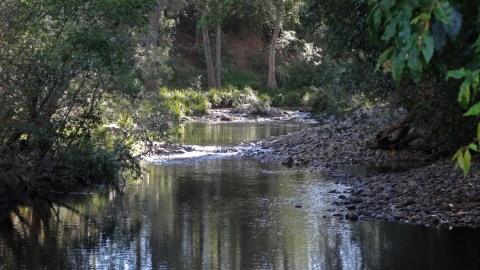- Home
- Assessments
- Bioregional Assessment Program
- Methods
- Surface water modelling
- 2 Components of surface water modelling
2.1 Aims of surface water modelling
The aim of surface water modelling in bioregional assessments (BAs) is to provide information on flow characteristics at locations in the stream networks that are relevant for key water-dependent assets. In particular, the modelling needs to account for changes in flow regime that relate directly to the impacts of future coal mining and coal seam gas extraction. This modelling forms the basis for product 2.5 (water balance assessment) and product 2.6.1 (surface water numerical modelling).
2.2 Components of surface water modelling
In most subregions and bioregions, surface water modelling is done in a two-stage process. Firstly fluxes from the landscape (predominantly surface runoff, interflow and baseflow) are modelled using a streamflow model (also called a landscape model or a rainfall-runoff model). These fluxes are then accumulated and routed through the river network using a river system model.
There are several modelling options available for each of these stages. These options, together with recommended models, are discussed in Chapter 3 and Chapter 4.
Given the operational constraints for modelling in BAs, it is clearly desirable to adopt any pre-existing models where possible. If no existing model is suitable, then efforts should be next directed towards adapting an existing model by making appropriate and necessary changes to its algorithms or mode of operation. Only as a last resort should resources be directed towards building new models.

METHODOLOGY FINALISATION DATE
- 1 Background and context
- 2 Components of surface water modelling
- 3 Streamflow modelling
- 4 River system modelling
- 5 Constituent modelling
- 6 Modelling the impacts of coal resource development
- 7 Linkages with other modelling components
- 8 Outputs from surface water modelling
- Appendix A Modifications to AWRA-R
- Appendix B Proposed structure of product 2.6.1 (surface water numerical modelling) and product 2.5 (water balance assessment)
- References
- Datasets
- Citation
- Acknowledgements
- Contributors to the Technical Programme
- About this submethodology
